Abstract
Indirect immunofluorescence (IF) was used to localize stage-specific antigen(s) on the surface of the sporozoite membrane. The authors examined the feasibility of using an IF assay to determine whether an antisporozoite response is developed by individuals living in endemic areas. The specificity and sensitivity of the IF assay were first defined by using hyperimmune sera of sporozoite-immunized hosts protected against rodent (P. berghei), simian (P. knowlesi), and human (P. falciparum, P. vivax) malarias. Species- and stage-specific antisporozoite antibodies were detected by this technique when viable or glutaralde-hyde-fixed sporozoites were used as antigen. The sensitivity of indirect immunofluorescence was found to be 5-10 times greater than that of the circumsporozoite precipitation (CSP) assay. Preliminary studies on sera obtained from individuals living in endemic areas showed that the IF assay can be used to detect species- and stage-specific antisporozoite antibodies in sera of naturally-infected human and simian hosts.
Full text
PDF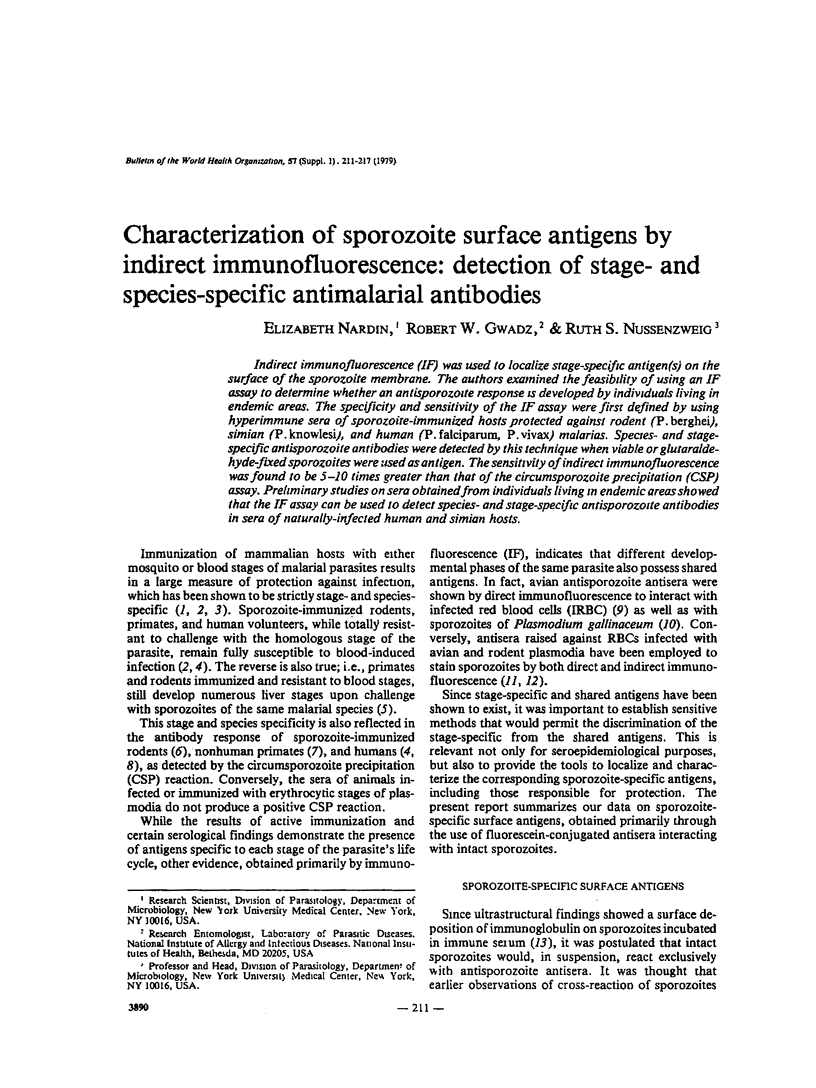
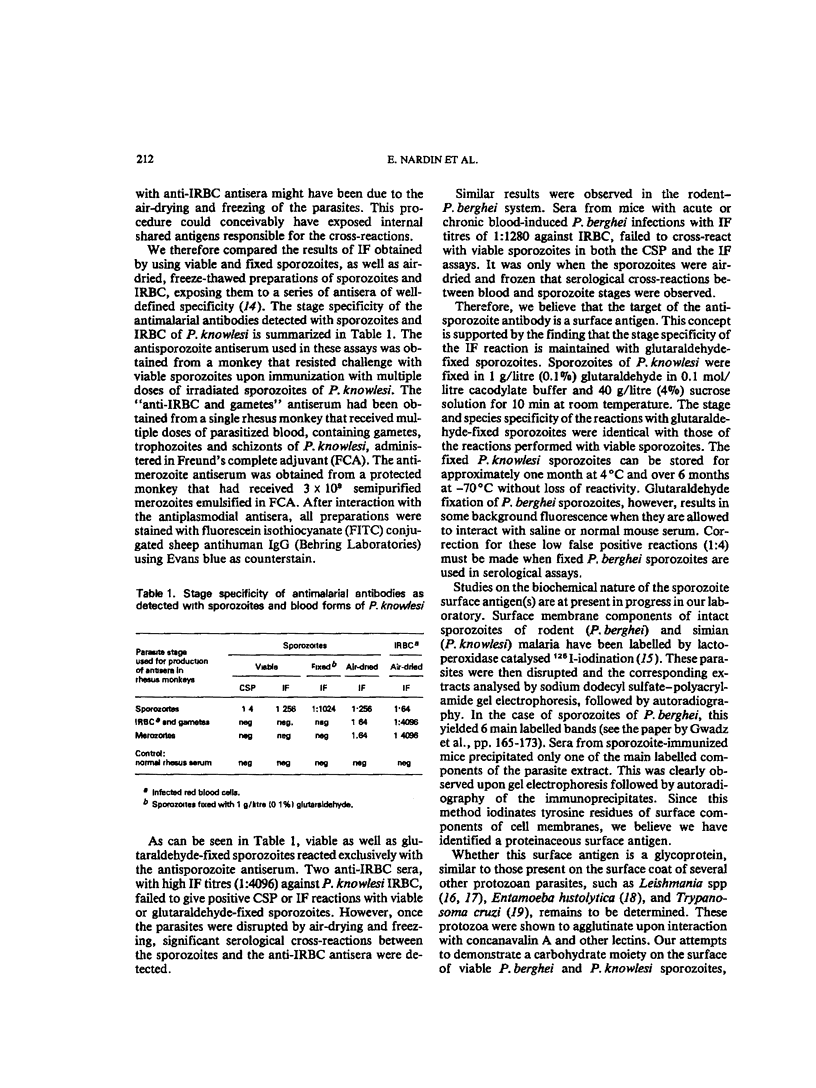
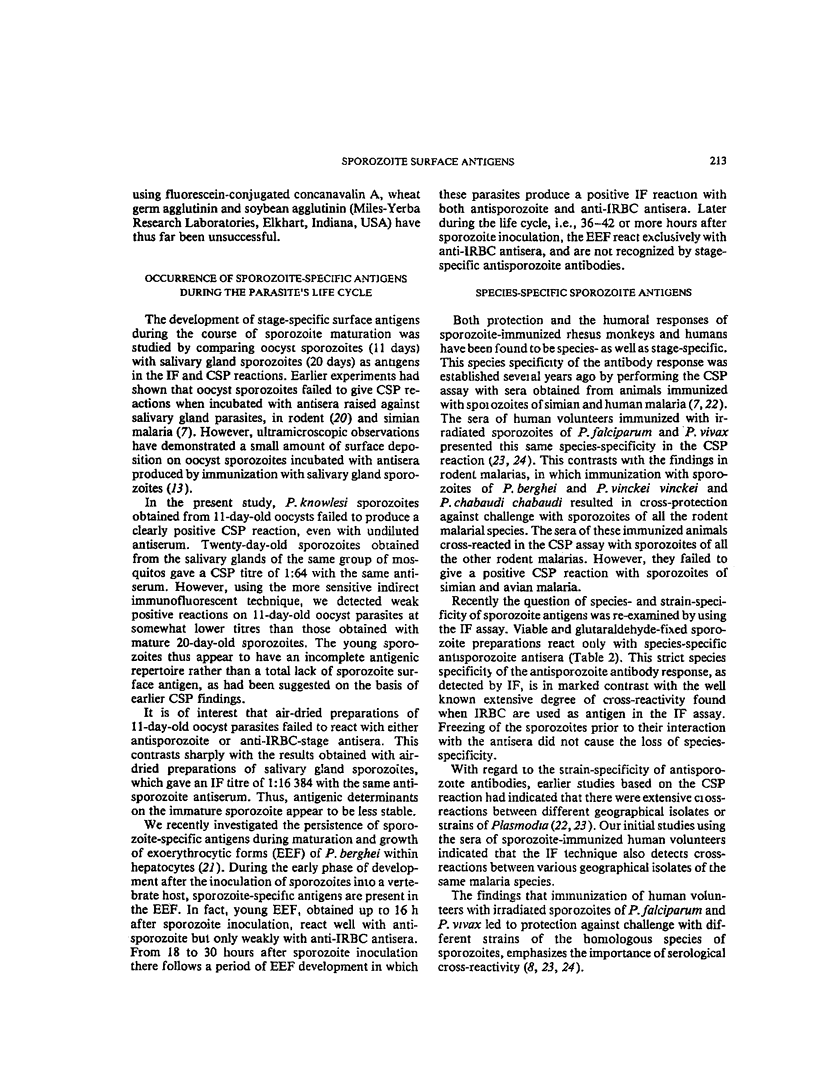
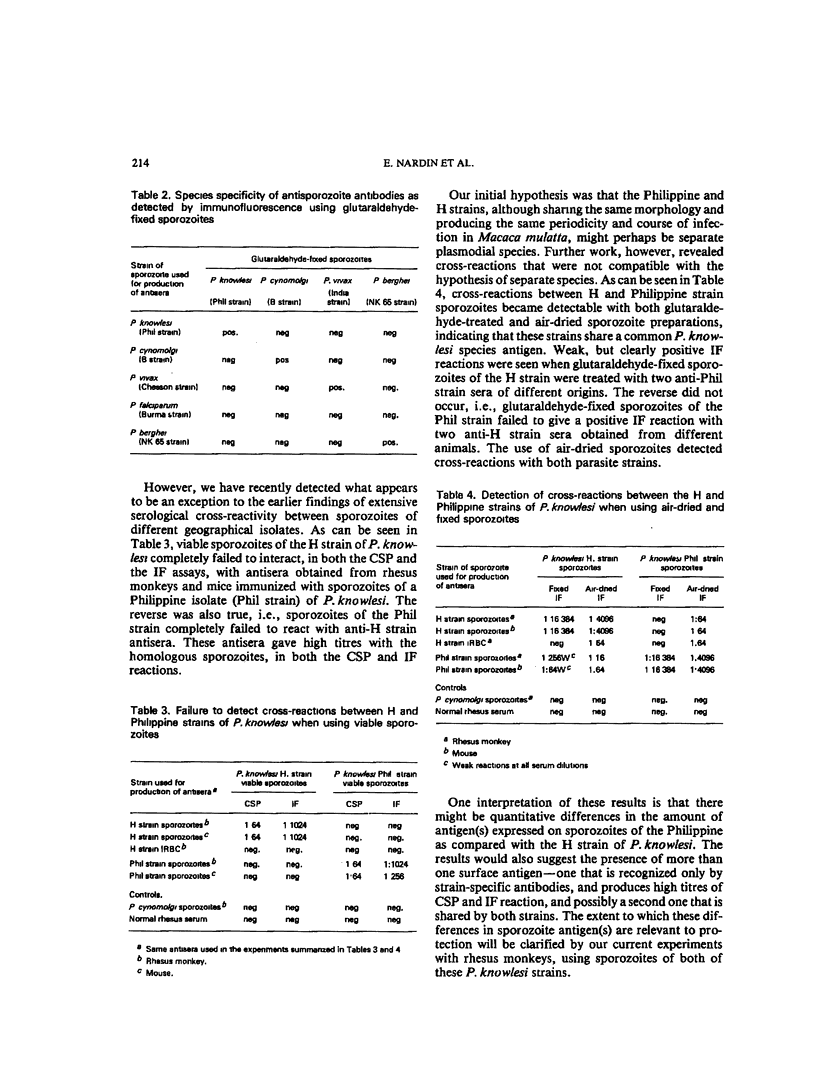
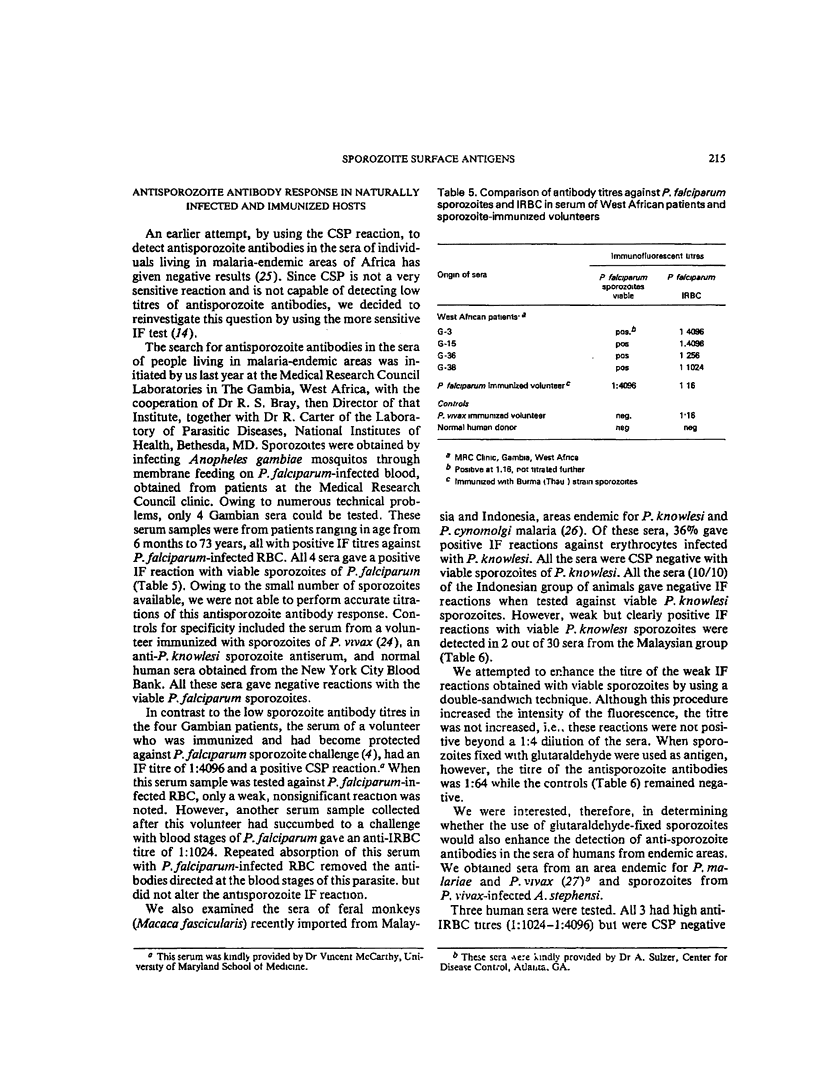
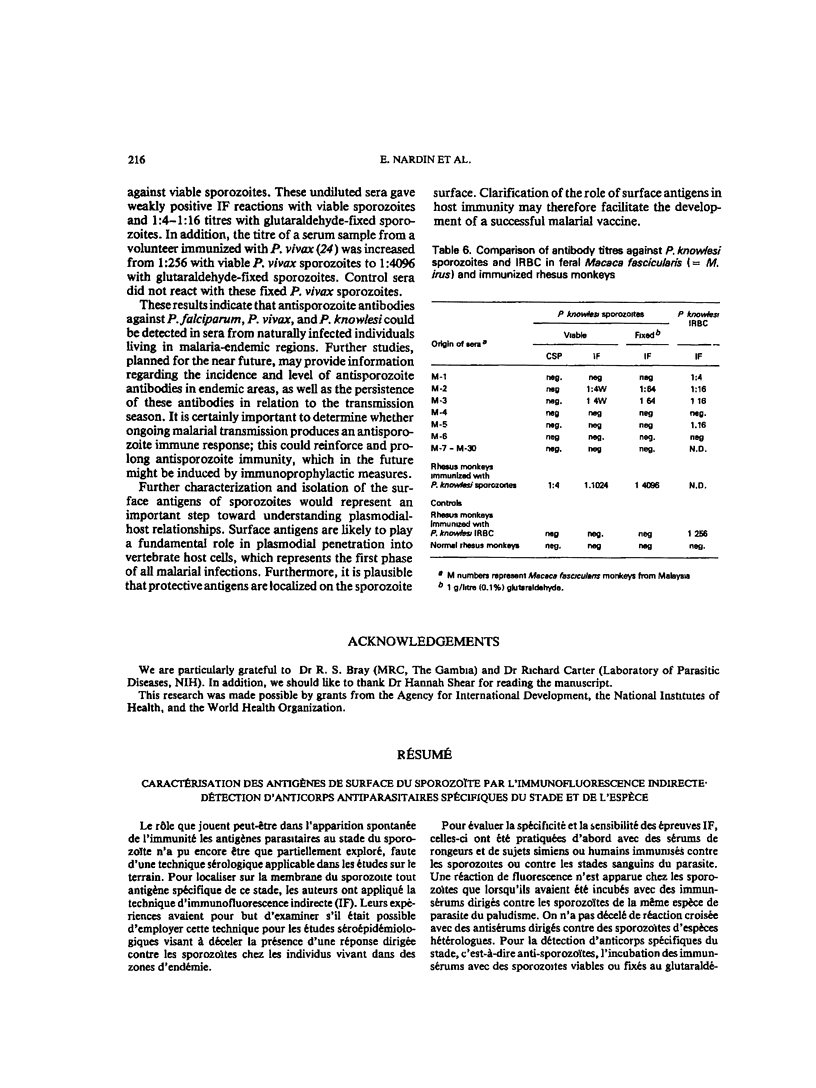
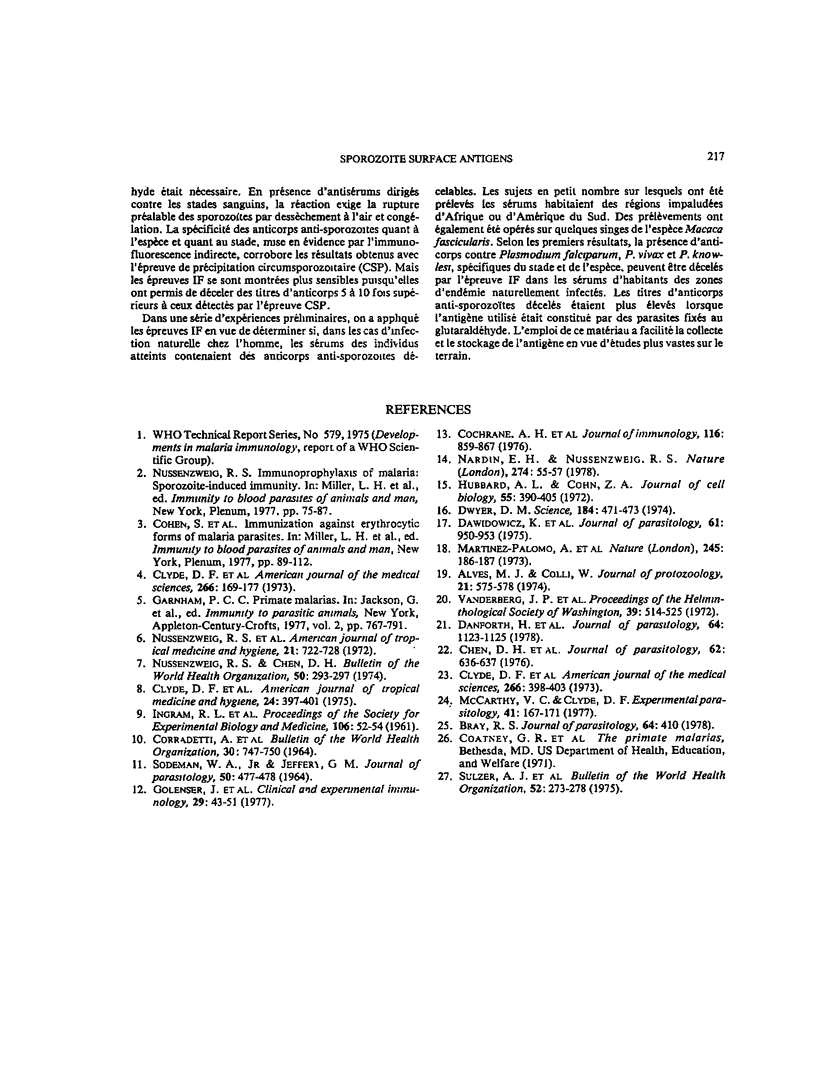
Selected References
These references are in PubMed. This may not be the complete list of references from this article.
- Alves M. J., Colli W. Agglutination of Trypanosoma cruzi by concanavalin A. J Protozool. 1974 Oct;21(4):575–578. doi: 10.1111/j.1550-7408.1974.tb03704.x. [DOI] [PubMed] [Google Scholar]
- Cochrane A. H., Aikawa M., Jeng M., Nussenzweig R. S. Antibody-induced ultrastructural changes of malarial sporozoites. J Immunol. 1976 Mar;116(3):859–867. [PubMed] [Google Scholar]
- Danforth H. D., Orjih A. U., Nussenzweig R. S. Immunofluorescent staining of exoerythrocytic schizonts of Plasmodium berghei in fixed liver tissue with stage-specific immune serum. J Parasitol. 1978 Dec;64(6):1123–1125. [PubMed] [Google Scholar]
- Dawidowicz K., Hernandez A. G., Infante R. B., Convit J. The surface membrane of Leishmania. I. The effects of lectins on different stages of Leishmania braziliensis. J Parasitol. 1975 Oct;61(5):950–953. [PubMed] [Google Scholar]
- Dwyer D. M. Lectin binding saccharides on a parasitic protozoan. Science. 1974 Apr 26;184(4135):471–473. doi: 10.1126/science.184.4135.471. [DOI] [PubMed] [Google Scholar]
- Hubbard A. L., Cohn Z. A. The enzymatic iodination of the red cell membrane. J Cell Biol. 1972 Nov;55(2):390–405. doi: 10.1083/jcb.55.2.390. [DOI] [PMC free article] [PubMed] [Google Scholar]
- Martinez-Palomo A., Gonzalez-Robles A., De la Torre M. Selective agglutination of pathogenic strains of Entamoeba histolytica induced con A. Nat New Biol. 1973 Oct 10;245(145):186–187. doi: 10.1038/newbio245186a0. [DOI] [PubMed] [Google Scholar]
- McCarthy V. C., Clyde D. F. Plasmodium vivax: correlation of circumsporozoite precipitation (CSP) reaction with sporozoite-induced protective immunity in man. Exp Parasitol. 1977 Feb;41(1):167–171. doi: 10.1016/0014-4894(77)90142-4. [DOI] [PubMed] [Google Scholar]
- Nardin E. H., Nussenzweig R. S. Stage-specific antigens on the surface membrane of sporozoites of malaria parasites. Nature. 1978 Jul 6;274(5666):55–57. doi: 10.1038/274055a0. [DOI] [PubMed] [Google Scholar]
- Nussenzweig R. S., Chen D. The antibody response to sporozoites of simian and human malaria parasites: its stage and species specificity and strain cross-reactivity. Bull World Health Organ. 1974;50(3-4):293–297. [PMC free article] [PubMed] [Google Scholar]
- Sulzer A. J., Cantella R., Colichon A., Gleason N. N., Walls K. W. A focus of hyperendemic Plasmodium malariae-P. vivax with no P. falciparum in a primitive population in the Peruvian Amazon jungle. Bull World Health Organ. 1975;52(3):273–278. [PMC free article] [PubMed] [Google Scholar]


